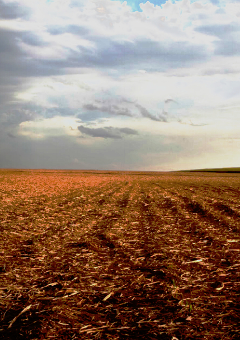Drought test for stronger crops
 Australian scientists have found a new way to develop drought-resilient crops.
Australian scientists have found a new way to develop drought-resilient crops.
Drought tolerance is critically important in the face of climate change, population growth and land-use pressures.
Scientists from the ANU and CSIRO have developed a new method to identify drought-resilient wheat quickly, cheaply and accurately.
The team conducted grain-yield evaluations under extensive field trials across the Australian wheat belt, which enabled them to build a statistical model of the drought-tolerance predictor.
Lead researchers Dr Arun Yadav and Dr Adam Carroll say selecting wheat that can grow better during short- to medium-term drought is vital to help fight food insecurity around the world.
“Our work may be instrumental for farmers to maximise food production in the face of increasingly severe drought,” said Dr Yadav.
“Hardy crop plants that can maintain high yields under drought will help farmers produce more food reliably and maintain domestic and export markets for Australia.
“Drought is a major agricultural challenge in Australia, affecting food production, farmers' livelihoods and costing the government billions of dollars in relief efforts.”
The simple test measured the relative abundance of four amino acids in wheat plants to predict their ability to maintain yield under drought much more accurately than current state-of-the-art methods, said Dr Carroll.
“This test can be done precisely in greenhouses all year round, at a fraction of the cost of traditional field-based methods. Plus, it gives more accurate predictions,” he said.
“If breeders are provided with 1,000 wheat varieties to choose from, they can select the drought resilient lines through a simple assessment of the four amino acids we've identified,” Professor Barry Pogson said.
“The challenge is for us to show this technique does scale beyond the varieties we have tested to date.”
The study is published in the Journal of Experimental Botany.








 Print
Print